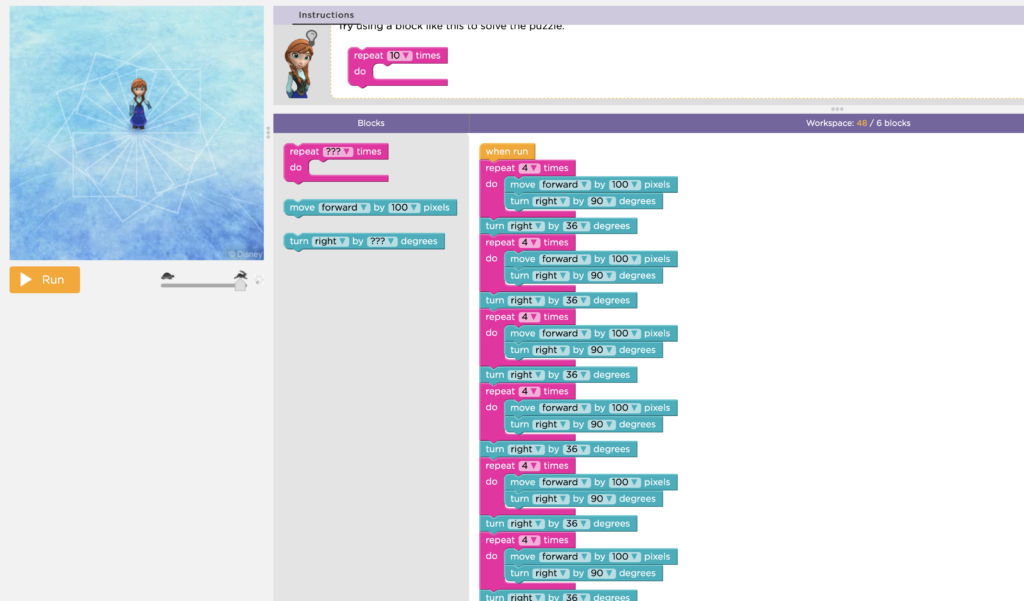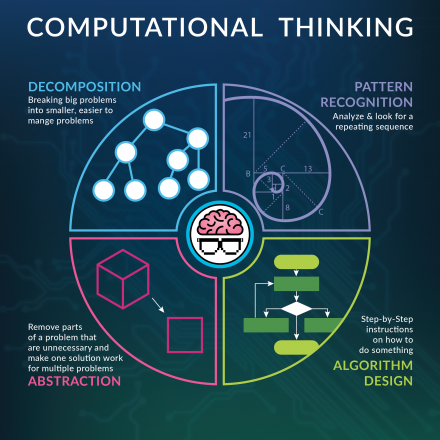Cross-curricular coding and computational thinking are quickly gaining popularity within the classroom. Coding and computational thinking are both very important in the world today. Computers, phones, game consoles, laundry machines, and so many other devices are programmed through coding. It is through coding that the world is currently so technologically advanced.
My personal experience with coding was not a positive one. When I first began my undergraduate degree, I chose to pursue engineering. I decided to study engineering as I excelled in math and science throughout my secondary school education. During my studies, I did well in my classes; however, when it came to computer science I really struggled. Prior to commencing a computer science course, I never had any experience with coding in all of my previous education. No prior exposure to computer science and being in a class filled with individuals with vast knowledge on coding was really difficult. I find coding to be extremely difficult and frustrating, but that will not stop me from implementing it in the classroom. Due to my unpleasant experience with coding, I strive to give my students exposure to coding to ensure that they are capable of pursuing any career they want when they are older. They will be able to do whatever they desire as they will have acquired experience and skill with coding. Perhaps if I had been exposed to coding in my education, then I would not have faced the struggles that I did.
Below is my latest experience with coding. I think that this coding activity would be beneficial to use in the classroom as it shows students the breakdown of codes. Coding is a logical sequence of events, so seeing it broken down into simple structures will allow the development of more complex thinking as codes become more advanced.

Now, some questions…
Can computational thinking help learners become better problem solvers?
I think that computational thinking can help learners become problem solvers as this thinking promotes the break down of complex thinking into simple and logical steps. By breaking down complex problems into steps, learners can become better problem solvers as they will be able to focus on one step at a time. Computational thinking can be broken down into these four main steps as outlined by Computational Thinking – District Learning Team (sd61.bc.ca):
- “seeing a problem and its solution at many levels of detail (abstraction)
- thinking about tasks as a series of steps (algorithms)
- understanding that solving a large problem will involve breaking it down into a set of smaller problems (decomposition)
- appreciating that a new problem is likely to be related to other problems the learner has already solved (pattern recognition)”
(Computational Thinking – District Learning Team (sd61.bc.ca))
This article explains computational thinking really well, What is Computational Thinking? Why thinking like a computer builds skills for success (teachyourkidscode.com). The article highlights that computational thinking is becoming a desirable competency to have in the workforce. Therefore, it is important for educators to implement computational thinking problems in the classroom so that learners can develop this competency from an early age.

Are there any non-math-related opportunities for integrating coding and computational thinking into your grade level’s curriculum?
Coding and computational thinking are very math oriented, but they can be integrated into cross-curricular activities. Some other parts of the curriculum where coding and computational thinking can be utilized are science, career education, or applied design, skills, and technologies (Curriculum | Building Student Success – B.C. Curriculum (gov.bc.ca). These cross-curricular connects would allow students to develop numerous skills and competencies simultaneously which would enhance their learning experience.
This video shows the importance of problem solving and computational thinking. After viewing it, it is certain that coding and computational thinking should be integrated into different parts of the curriculum. This is because computational thinking (and problem solving) are such important competencies to develop.
Could computational thinking or coding turn math abstractions into concrete form for students with their inquiries at the grade level you’d like to teach?
Computational thinking and coding could turn math abstractions into concrete form for students. With coding and computational thinking, students can use technology to create codes to represent math abstractions. The possibilities with coding are endless. With the correct experience and skill, students can create unique and complex math abstractions that represent their inquiries. This promotes hands on learning and allows students to take on additional responsibility for their learning.
Bye for now!

Leave a Reply
You must be logged in to post a comment.